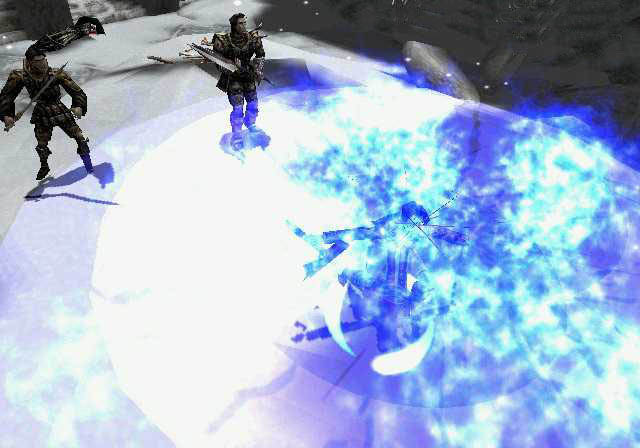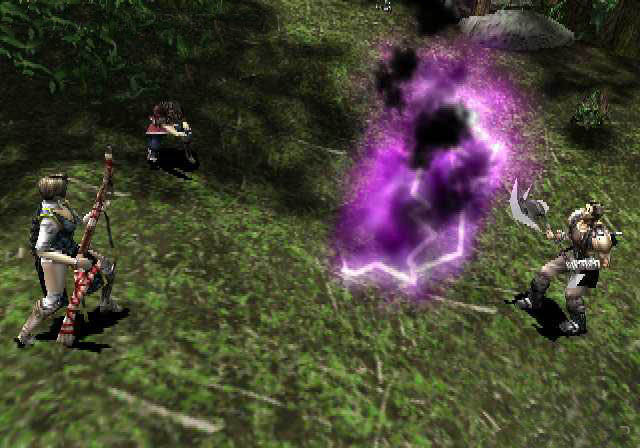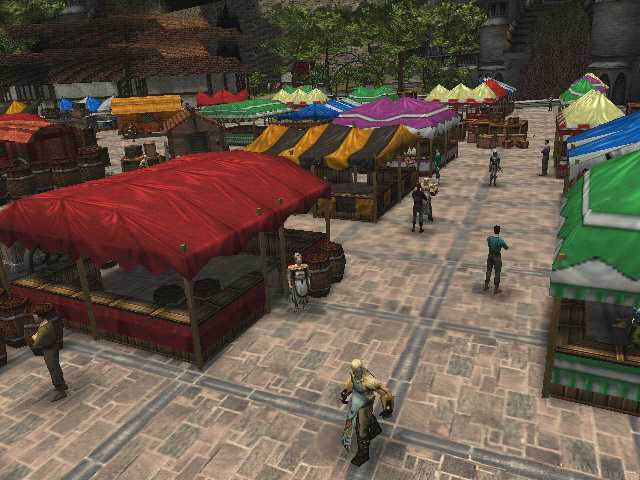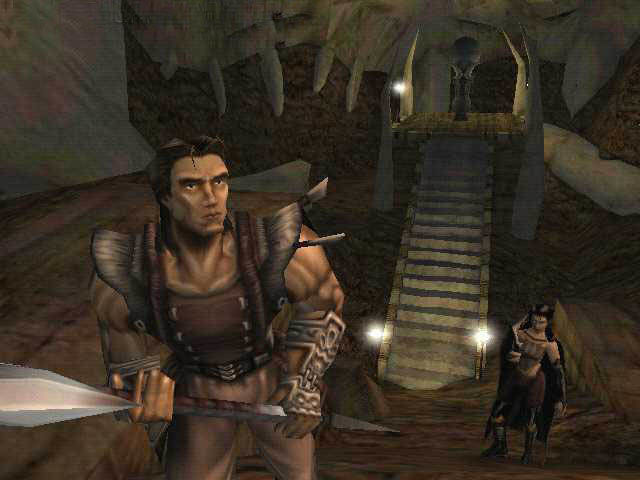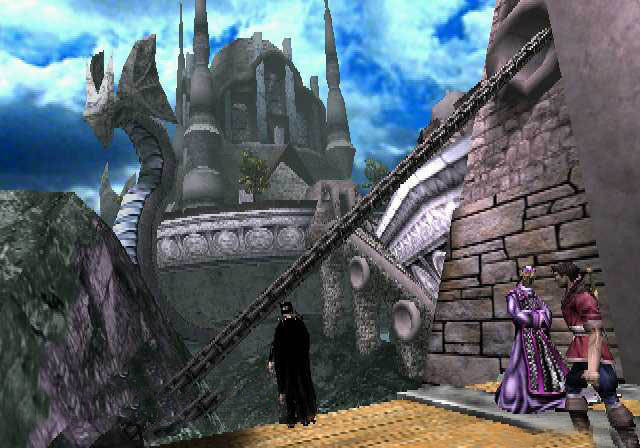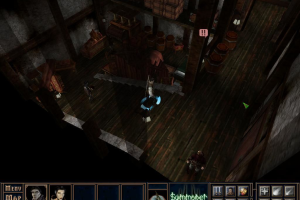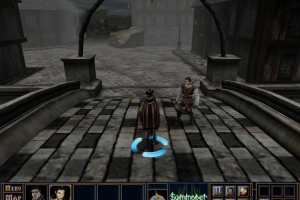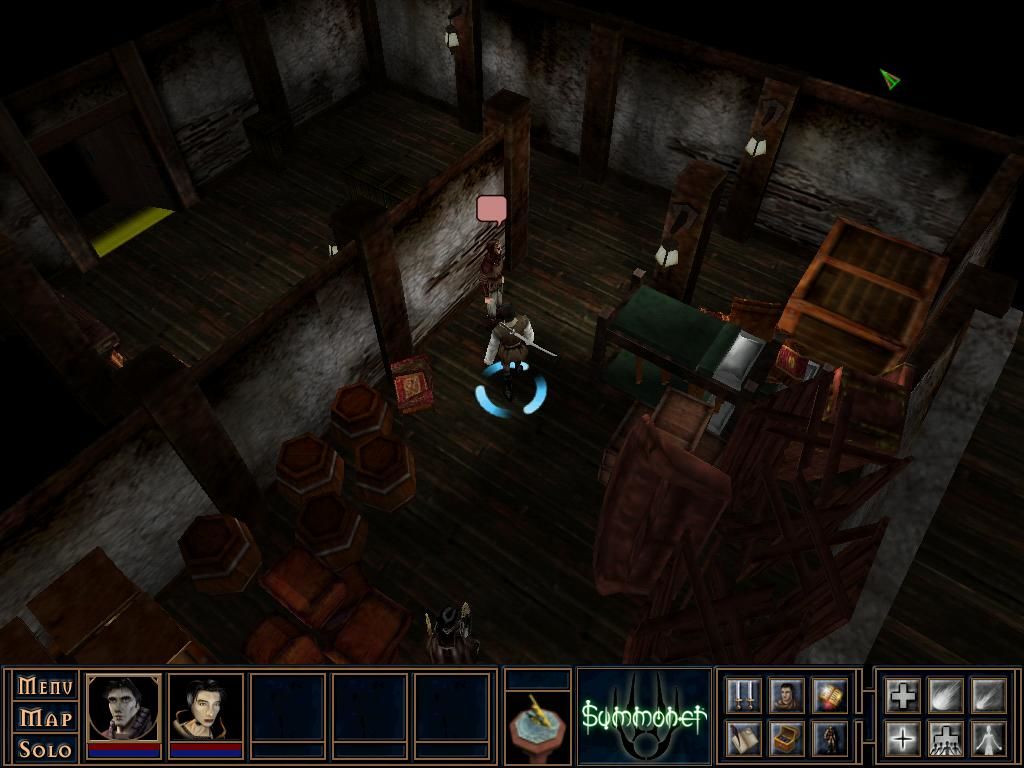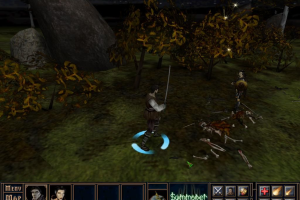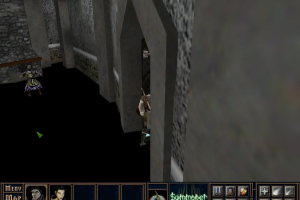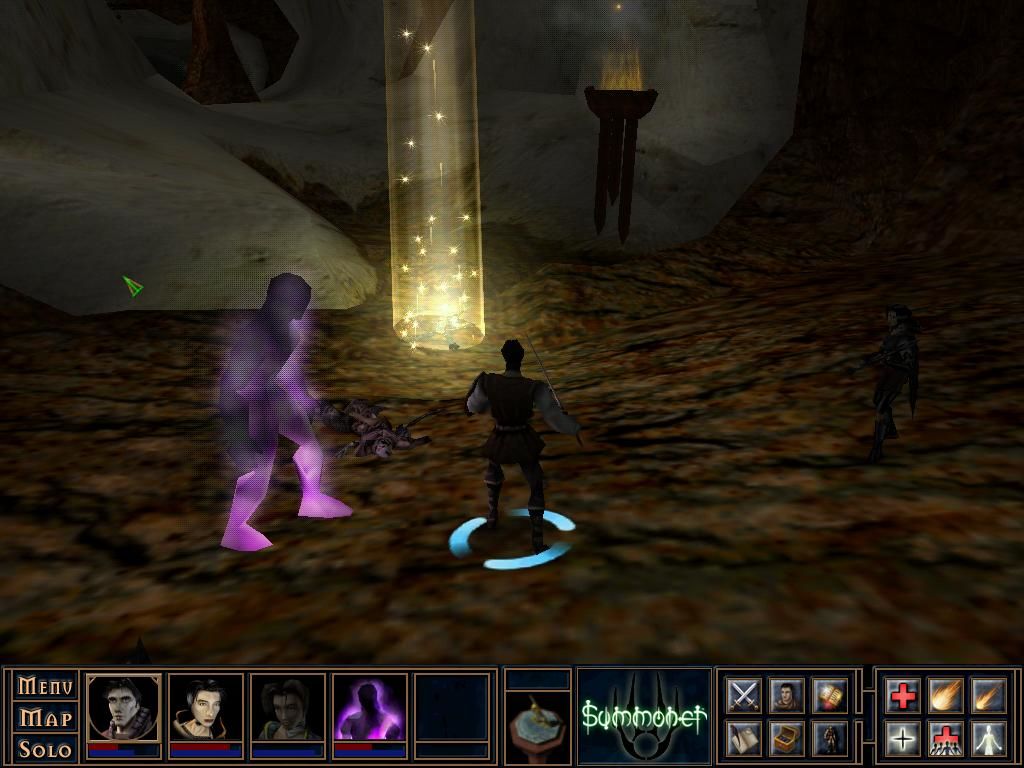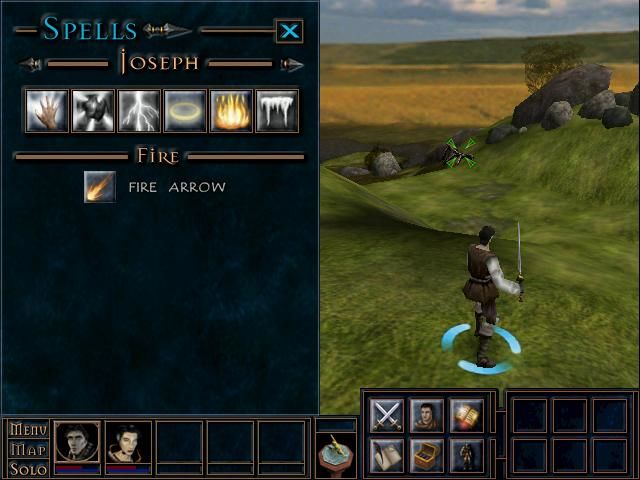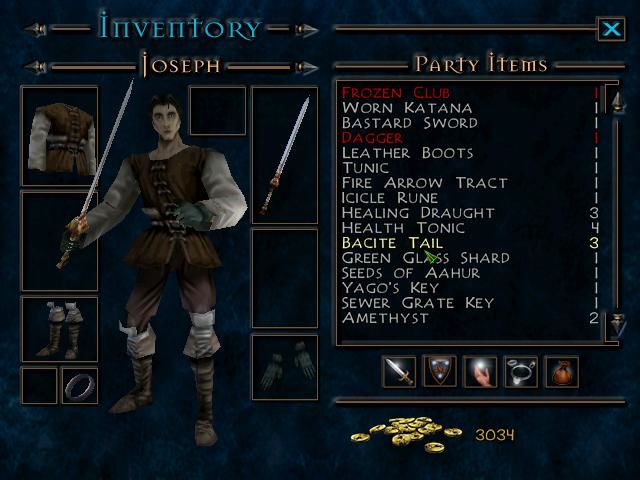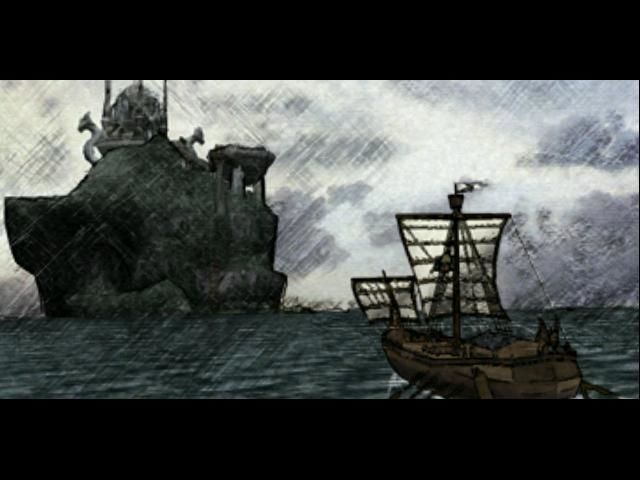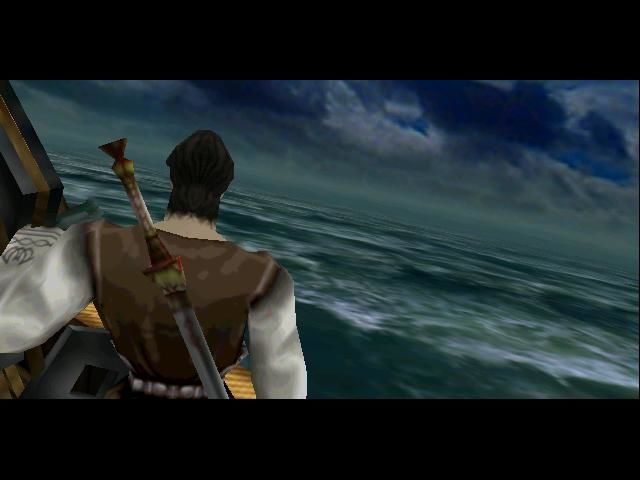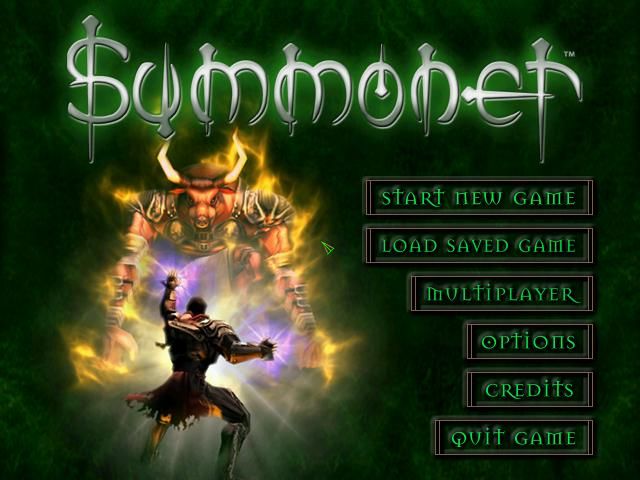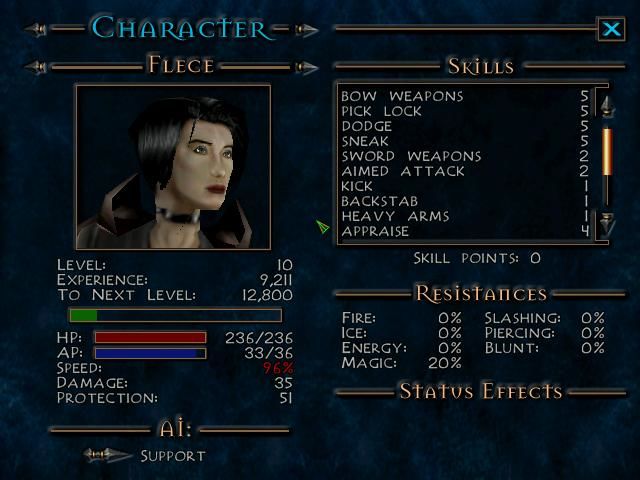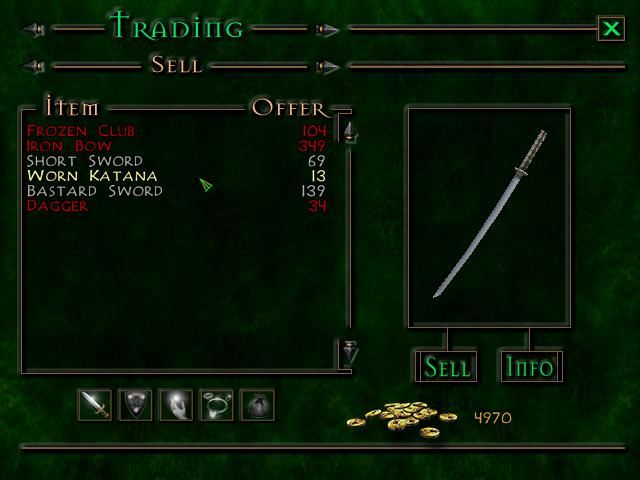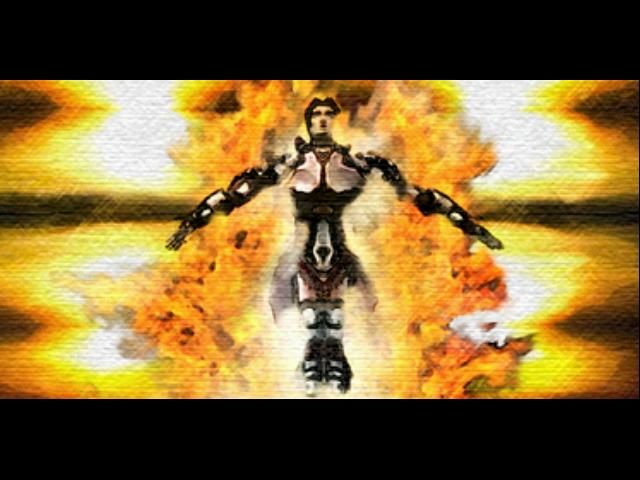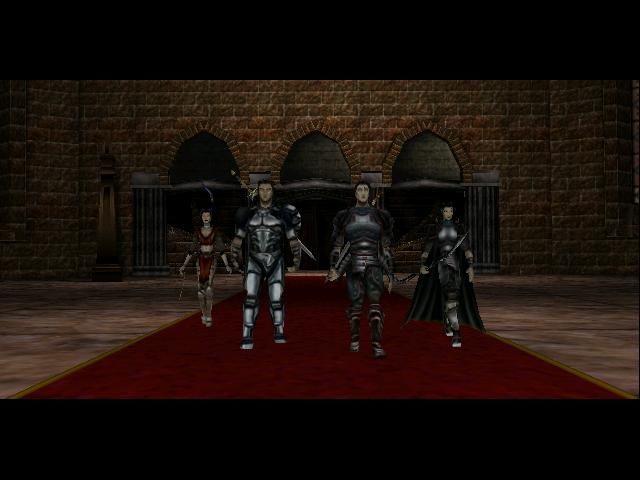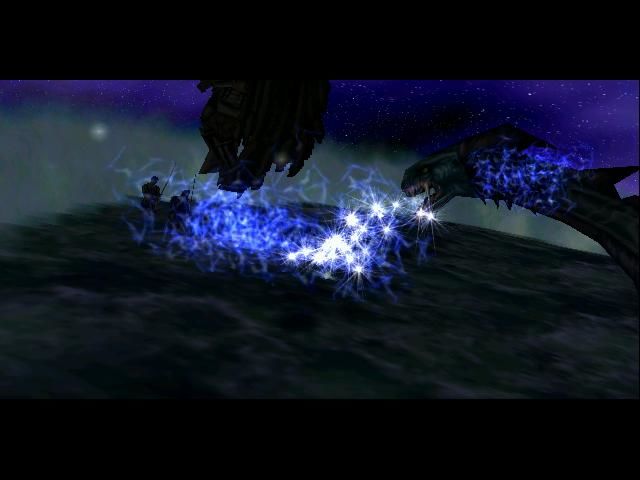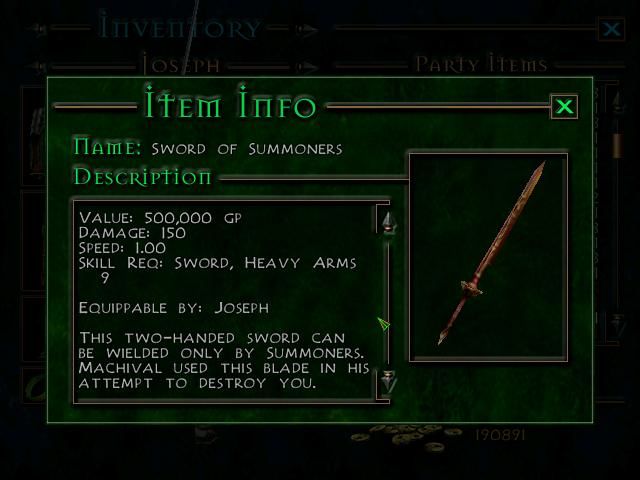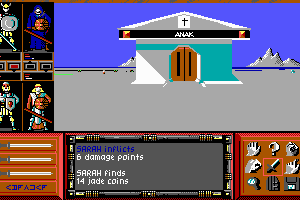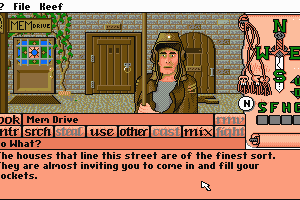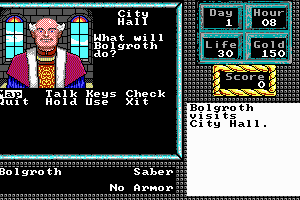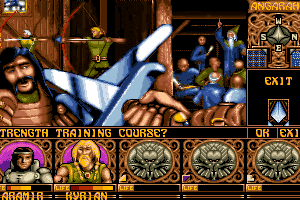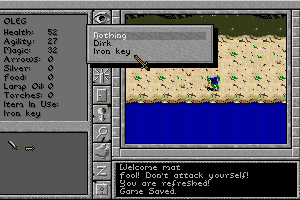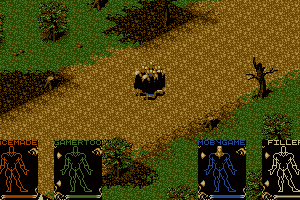Summoner
Windows - 2001
Also released on: Mac
Description of Summoner
It's a tough playground where the computer role-playing games hang out. On the one side there's the PC gang, led by the D&D; giants of Bioware and Black Isle, and the items-and-experience fest that isDiablo II. On the other? The champion of the console - so beefy it doesn't know (or care) that the others tread the same concrete: Final Fantasy. There's a line drawn down the middle of that playground, and a new RPG better decide which side it stands on fast, because a kid who tries to make nice with both gangs is only going to get hurt anyone remember Silver?
All right, I'm on a metaphor trip. Planescape: Torment, for one, courted both sides successfully. But the PC/console RPG division is a significant one, nothing less than the distinction between the way the West does it and the way the East does it, and it takes a brave game to try and bridge the gap.
Behold, THQ's Summoner. Developed simultaneously for PC and PS2, Summoner borrows from anything within reach, allowing the following description: it's a cross between* Baldur's Gate*, Diablo, any Fantasy of the Final variety and Vagrant Story.
In Days of Olde
*Summoner's *storyline is very traditional western fantasy. Expect silly names (Saanavarh and Vadagar), dark riders, and magic swords you can buy at the market. There's nothing here that will be unfamiliar to avid fantasists, but it's all very well implemented. The world of Khosos is nicely developed: its politics ring true and its mythologies are vivid, unlike many cut-and-paste fantasy lands. There's a lot of depth to the background material, sometimes almost too much, as the game doesn't have a journal to record the important bits of your conversations. The world even changes convincingly as the story progresses; the city of Lenele in particular being seen at several distinct stages over the course of the game.
The four pre-generated player characters come with interesting backgrounds and subplots, and it's a shame you can't initiate dialogue with them. The occasional conversational interlude would have helped generate more connection with them; as it is they go for long periods of the game without saying anything.
The central character is Joseph, a farmer born with the mark of the summoner who, after an ill-considered bit of demonology, destroyed his home village, his friends and his family. Years later, a dire prophecy drives the Emperor of orientally-themed Orenia to invade the neighbouring kingdom of Medeva in an attempt to capture the summoner who is destined to destroy him, and Joseph is forced to turn again to the powers he has forsaken.
The plot twists and turns as it continually ups the stakes, and is willing to take some very brave steps. Console players are more accustomed to games doing dramatic things to the characters that are totally beyond the player's control, but PC gamers should get a refreshing shock. Once the story hits its stride, it is brilliantly involving. Admirably, what in many other games would be the whole plot - the finding of the four rings of summoning - turns out to be just the beginning
The expected side-quests are there, although many aren't up to the standards set by the main plot. It's possible to do a fair few of them without really trying. After the imaginative standards of Fallout and Torment, players may well expect better. The game's dialogue, though, goes some way to compensating. It walks a fine line between being authentic and readable, so while it is free from modernisms (no wizards calling you 'dude', nobody getting their 'asses kicked') nor does it creak under the burden of 'prithee's and 'thou's other games mistake for good writing.
The Third Dimension
Perhaps the thing that most defines Summoner is its 3D, third-person look. Its predecessors in this regard, Vampire and Ultima IX, haven't inspired confidence, and the concerns they raised are somewhat extant. Simply, 3D is more fiddly than a 2D isometric layout - you'll need to spin the camera around to get a decent view, move closer to enemies before you can target them for actions, and curse obstructive walls. Find the F12 key, which toggles the camera mode, and use it often. To *Summoner's *credit, while these were all problems, they occurred less often than I had expected them to and the system's strengths won me over.
The real annoyance of the method, though, is the limits on the camera. It has two basic orientations: an overhead view and a following view, either of which you can rotate 360 degrees. This means you can look all around you and see a plan of the area around you but that you can't look up. This is important because the key element in fantasy architecture is scale - there's no use the Tower of Eleh reaching all the way to Heaven if you can't look up at it disappearing into the clouds and say 'gosh.'
On the plus side the graphics are very good. The 3D aspect and following camera are much more immersive than a 2D view, keeping you close to the action and showing you both what they see and them amidst it. It's less impersonal than isometric or first-person approaches and, for example, opens the possibility of stealth sequences, where you sneak your thief past guards and dodge into doorways to avoid their patrols.
The characters are all well drawn and animated, with the summoned creatures and their conjuration animations being particularly impressive. The golem, for example, bursts from the earth as a creature of volcanic rock, gradually cooling to grey stone. The spell effects are equally attractive, and the combat animations are well done.
Cut-scenes are largely done in engine. While cost-effective and consistent, they are nowhere nearly as evocative as a good bit of FMV, with character faces and emotion being particular problems. They are also more infrequent than they perhaps should have been - a few panning shots to establish locations would have been nice. Occasionally, a new 'chapter' of the game is introduced by a voice-over and still, parchment-style art, both of which are excellently done and effectively drive the story forwards.
The excellent design work that has gone into each location is inspiring. Especially good are the palace and temple in Lenele, the catacombs beneath the monastery of Iona, which stretch between the vast bones of a dead god, and the eerie cavern-city of the Khosani. The viewpoint pulls you right into these brilliantly realised locations, giving you plenty of 'Wow!' for your pound (and more reason to curse that maddening inability to point the camera upwards). Furthermore, areas can be truly three-dimensional, with spiralling staircases, overpasses and bridges, often all from a single moderate load time.
Leaving an area takes you to a fairly basic world map and leaves you open to random encounters. These are neither too frequent nor too difficult, and occur on beautifully drawn external areas, which have a number of escape routes. It's not just random encounters out there, either. Summoner cleverly uses the world map for quest- and plot-based incidents as well. At one point, being unable to find my way into a certain location on the world map, it occurred to me to wander about it for a while, whereupon I had an encounter with some inhabitants of that place and talked them into taking me there.
Begone forever, funny-shaped dice
Rather than try to convert or simulate a pen and paper system, Summoner has invented its own, which sits more comfortably with a computer game. It's all simple and intuitive, skill-based stuff that has obvious, real game effects. The four members of your party each have distinct skills and abilities, with new ones opening at different levels and the player choosing which ones to develop. The thief's hide, sneak and backstab abilities all work especially well in a 3D setting, and Rosalind's assess skill, which tells you a monster's abilities and weaknesses, opens up some real tactical opportunities.
Coolest of all is, of course, Joseph's summoning power. Each creature has its own skills, spells and combat abilities, and importantly looks cool. Initially they are fragile, but they gain power quickly and it's fun working out how best to use each one.
Hitting things
Combat requires you issue orders to your party members, or leave them to follow an AI script you've selected for them. The AI isn't very sophisticated and it can be tricky keeping everyone focused on a single opponent and your spellcaster out of melee, but for the vast majority of battles it works fine. For intense combats though, you'll want to go into 'solo mode', which deactivates the AI, and carefully issue instructions.
The standard enemy AI is similarly uninspired. They fight to the death, don't call for help and seem chronically short-sighted and hard of hearing, refusing to respond to combats raging more than 30 feet away. The AI for boss enemies is more impressive - I once had a dark rider charge into the midst of my party, explode into flames knocking everyone to the ground, and then cast a wall of fire over their stunned bodies. In fact the boss fights are universally excellent - they are well-staged and challenging. If the lesser foes had a bit more intelligence or at least variable behaviour, it would have made certain parts of the game more convincing.
Annoyances are the exception rather than the rule, however, and overall *Summoner's *combat is one of the best features of the game. The 3D perspective makes the whole thing more exciting. Characters can have dodge, parry and counterstrike skills, and leap about the place, blocking incoming blows and riposting with quick stabs - a far cry from BG's static figures repeating the same swing animation and grunting.
The 'chaining' system, kidnapped from Vagrant Story, adds a fun arcade element to the whole affair and gives you something to do whilst overseeing the fight. Each time the character you are controlling attacks, you have a split second to click the mouse button and trigger a special attack. This increases your options: fighting an enemy who is immune to sharp weapons? Then attack him as normal but chain a kick attack to deal him blunt damage. Want to escape from combat? Then chain a leg swipe to slow the foe down and make a run for it. Cleverly, fast and well-balanced weapons increase the time you have to chain, simulating a skilled fighter who relies on finesse to finish off his foes. Bluff old traditionalists can set the computer to chain automatically. It's nowhere near as effective as a quick-fingered player but it gets by.
Why it's not a classic
I really, really like Summoner, and it's frustrating that the one thing keeping it from being nominated for a GD award are a variety of niggling problems. Most importantly, the early stages of the game (the first five or six hours, I'd say) are ridiculously dull. You only have a single character to control and no interesting abilities. The opening scenes see Joseph's village attacked by raiders, but it's the most sedate atrocity I've heard of. Soldiers stand about waiting to be attacked as you blunder around in search of an exit. There's precious little tension and no urgency. The next area, the city of Lenele, isn't much better. It lacks the crowded, bustling feel of Baldur's Gate and *Baldur's Gate II's *cities, the side-quests are dull and the maps unhelpful.
It isn't until you go to the island-monastery of Iona, with its enslaved children and fantastically mad monks (who study the language of creation, though it eats out their eyes and puts worms in their brain) that the game lets on how good it actually is. From this point on high standards are maintained, but more casual players will be put off by the drab early stages.
I've mentioned that the dialogue was good, but it's also limited. It's rare you actually have a choice to make in a conversation, and the lack of variety limits the options on side-quests. Some of the sound effects don't meet the standards of the visuals, though the music is very atmospheric, and I've already mentioned the AI and interface issues. There are some bugs as well, which hopefully will be sorted out by the final release. When I left an area, the map forgot any notes I had made on it, and the longer I played, the more jerky the graphics got, necessitating a save and reload.
There are no massive flaws with Summoner (although some will favour 2D isometry over spinny 3D-ness) just a range of minor gripes. Sadly, they annoy enough to make the game less than it could have been. The obligatory multiplayer mode is here, in this case a Diablo-esque hack-and-slash through maps stocked with random monsters, but it's the single player experience that makes or breaks a role-playing game.
Parting words
Summoner is at its best when thinking outside the box and making full use of its 3D environment. Its plot is dramatic and ambitious, its gameplay involving, and it features some absolutely fantastic locations. Volition have combined elements from eastern and western RPG's with great success, making Summoner an experience reminiscent of, yet distinct from, other titles. Though its problems mean Summoner doesn't get an award, it comes as recommended as a game can be without one.
Fun Tip: For those of you who have ever played a pen-and-paper RPG, check out the game's credits. There's a brilliant skit at the end that shouldn't be missed.
Review By GamesDomain
External links
Captures and Snapshots
Comments and reviews
Steve Hoyland 2021-06-06 2 points
A massive game for It's time with many different areas to explore Including Towns, Markets, Ports, Castles, Caves, Caverns, Catacombs, Palaces, Monasteries, Dungeons, Sewers, Forests and more, and a host of characters with whom to interact (even NPC's usually have something of Interest to say), and many puzzles to overcome and tasks to complete. Having played for the first time In nearly twenty years, I successfully completed the game for the second time and enjoyed every minute of It as much as I did first-time around. Don't be put off by the early part of the game - It's rather boring early on, probably Intended to give players an Introductory 'feel' of the game; the early scenes certainly belie what's to come as the game builds. It soon 'picks up' and gradually becomes ever-more Interesting with surprises around every corner; the sheer size of the game still amazes me even by todays standards. Be prepared for the long-haul; It will keep you going for much longer than you'd expect and It's a real feeling of accomplishment when you finally succeed. A must-have for all true lovers of classic RPG's. At less than a fiver It's worth every penny.
Write a comment
Share your gamer memories, give useful links or comment anything you'd like. This game is no longer abandonware, we won't put it back online.
Buy Summoner
Summoner is available for a small price on the following websites, and is no longer abandonware. GOG.com provides the best release and does not include DRM, please buy from them! You can read our online store guide.
Other Releases
Summoner was also released on the following systems:
Mac
- Year: 2001
- Publisher: Graphic Simulations Corporation
- Developer: Volition, Inc.
Similar games
Fellow retro gamers also downloaded these games:
